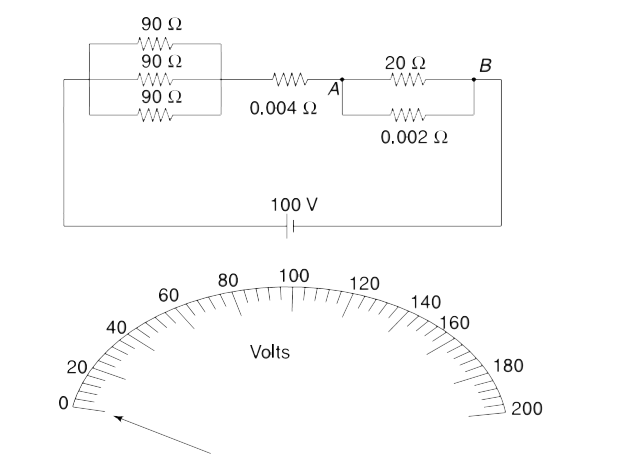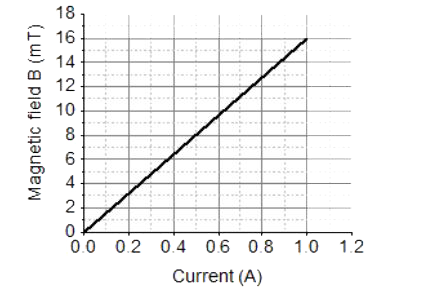One microelectrode is inserted into a healthy neuron and another is placed outside the ceil.If the neuron is then hyperpolarised by a chemical stimulus, what will happen to the membrane potential recorded by the electrodes?
It will become more positive.
It will become more negative.
It will first become morepositive, then return to normal.
It will not change.
To solve the question regarding the effect of hyperpolarization on the membrane potential recorded by microelectrodes in a neuron, we can follow these steps:
1. Understanding Microelectrodes:
- Microelectrodes are small electrodes used to measure the electrical activity of cells, including neurons. One is inserted into the neuron (intracellular), and the other is placed outside the neuron (extracellular).
2. Normal Membrane Potential:
- In a healthy neuron at rest, the membrane potential is typically around -70 millivolts (mV). This negative value indicates that the inside of the neuron is more negatively charged compared to the outside.
3. Hyperpolarization:
- Hyperpolarization occurs when the membrane potential becomes more negative than the resting potential. This can happen due to the influx of negatively charged ions (like Cl⁻) or the efflux of positively charged ions (like K⁺).
4. Effect of Hyperpolarization:
- When a neuron is hyperpolarized, the membrane potential may shift from -70 mV to a less negative value, potentially approaching 0 mV or even becoming positive (e.g., +10 mV).
5. Recording the Membrane Potential:
- The microelectrode inside the neuron will record this change in membrane potential. If the neuron is hyperpolarized, the reading from the intracellular electrode will reflect this change. The extracellular electrode will also show a corresponding change, but it will be less pronounced.
6. Conclusion:
- As a result of hyperpolarization, the membrane potential recorded by the electrodes will show a positive shift from the resting potential. Eventually, it will return to the normal resting potential of around -70 mV after the hyperpolarizing stimulus is removed.
Final Answer:
The membrane potential recorded by the electrodes will become less negative (or more positive) during hyperpolarization and then return to the normal resting potential.
---
- Microelectrodes are small electrodes used to measure the electrical activity of cells, including neurons. One is inserted into the neuron (intracellular), and the other is placed outside the neuron (extracellular).
- In a healthy neuron at rest, the membrane potential is typically around -70 millivolts (mV). This negative value indicates that the inside of the neuron is more negatively charged compared to the outside.
- Hyperpolarization occurs when the membrane potential becomes more negative than the resting potential. This can happen due to the influx of negatively charged ions (like Cl⁻) or the efflux of positively charged ions (like K⁺).
- When a neuron is hyperpolarized, the membrane potential may shift from -70 mV to a less negative value, potentially approaching 0 mV or even becoming positive (e.g., +10 mV).
- The microelectrode inside the neuron will record this change in membrane potential. If the neuron is hyperpolarized, the reading from the intracellular electrode will reflect this change. The extracellular electrode will also show a corresponding change, but it will be less pronounced.
- As a result of hyperpolarization, the membrane potential recorded by the electrodes will show a positive shift from the resting potential. Eventually, it will return to the normal resting potential of around -70 mV after the hyperpolarizing stimulus is removed.
The membrane potential recorded by the electrodes will become less negative (or more positive) during hyperpolarization and then return to the normal resting potential.
Topper's Solved these Questions
Similar Questions
Chemicals by which nerve impulses transmit through one neuron by another are
View SolutionIn an experiment to measure the membrane potential of a living plant cell micro-electrodes are placed inside and outside the cell. The membrane potential is measured to be 120 mV and a current of 1.5 nA flows through the membrane .Assume that the current density in the cell is uniform.
The total area of the cell membrane is 2.0mm2 and its thickness is 12 μm.
(a) What is the current density in the membrane?
(b) What is the resistivity of the membrane ?
View Solution
Knowledge Check
An electrode is placed in the axioplasm of a mammalian axon and another electrode is placed just outside the axon. The potential difference measured will be -
A0B−70 mVC−70μVD+70μVChemical transmission of nerve impulses from one neuron to another, or from a neuron to a muscle is carried out by
ACholesterolBAcetylcholineCCholecystokininDATPRead the following statements and find out the incorrect statements.
a. A synapse is formed by the membranes of a pre-synaptic neuron and a post-synaptic neuron, which may or may not be separated by a gap called synaptic cleft.
b. At electrical synapses, the membranes of pre-and post-synaptic neurons are in very close proximity.
c. Electrical current can flow directly from one neuron into the other across chemical synapses.
d. Impulse trasmission across a chemical synapse is always faster than that across a electric synapse.
e. Electrical synapses are rare in our system.Aa and bBb and cCc and dDd and e
No chemical reaction takes place when granules of a rusty brown solid A are mixed with the powder of another solid B. However, when the mixture is heated, a reaction takes place between its components. One of the products C is a metal and settles down in the molten state while the other product D floats over it. It was observed that the reaction is highly exothermic.
(a) What could the solids A and B be ?
(b) What are the products C and D most likely to be ?
(c) Write the chemical equation for the reaction between A and B leading to the formation of C and D.
Mention the physical states of all the reactants and products in this equation and indicate the heat change which takes place.
(d) What is the special name of such a reaction ? State one use of such a reaction.
(e) Name any two types of chemical reaction under which the above reaction can be classified.
View SolutionTwo litre solution of a buffer mixture containing 1.0MNaH2PO4 and 1.0MNa2HPO4 is placed in two compartments (one litre ineach) of an electrolytic cell. The platinum electrodes are inserted in each compartments and 1.25 ampere current is passed for 212 minute. Assuming electrolysis of water onlu at each compartment. What will be pH in each compartment after passage of above charge ? (pKa for H2PO−4=2.15.)
View SolutionA lab voltmeter has scale as shown in figure. A student uses this nearly ideal voltmeter to record potential difference between points A and B in the circuit shown. He could not see any deflection in the pointer and thinks that the voltmeter must be faulty. He replaces the voltmeter with another similar one. What reading will he record this time? Can you give some suggestion to record the potential difference across A and B ?

View SolutionA solenoid is a long helical coil of wire through which a current is run in order to create a magnetic field. The magnetic field of the solenoid is the superposition of the fields due to the current through each coil. It is nearly uniform inside the solenoid and close to zero outside and is similar to the field of a bar magnet having a north pole at one end and a south pole at the other depending upon the direction of current flow. The magnetic field produced in the solenoid is dependent on a few factors such as, the current in the coil, number of turns per unit length etc. The following graph is obtained by a researcher while doing an experiment to see the variation of the magnetic field with respect to the current in the solenoid. The unit of magnetic field as given in the graph attached is in milli-Tesla (mT) and the current is given in Ampere.

What will happen if a soft iron bar is placed inside the solenoid?
View SolutionQuestion Stimulus :-
DIRECTIONS: Read the following passage carefully and answer the questions given below it.
Long, long ago in a big forest, there were many trees, among the cluster of trees, there was a very tall pine tree. He was so tall that he could talk to the stars in the sky. He could easily gaze over the heads of the other trees. One day, late in the evening, the pine tree saw a little girl approaching him.
He could see her only because of his height. She was in tears. The pine tree bent as low as he could and asked the weeping girl. ‘What is the matter? Why are you crying?’ the little girl, still sobbing replied, ‘I was gathering flowers for the goddess Durga, Who I believe, would help my parents to overcome their poverty and I have lost my way’. The pine tree said to the little girl, ‘It is late in the evening. It will not be possible for you to return to your house, which is at the other end at the forest. Sleep for the night at this place.’ The pine tree pointed out to an open cavelike place under him. The little girl was frightened of wild animals.
The girl quickly crept into the cave-like place. The pine tree was happy and pleased with himself. He stood like a soldier guarding the place. The girl woke up in the morning and was amazed to see the pine tree standing like a guard outside the cave. Then her gaze travelled to the heap of flowers that she had gathered the previous night. The flowers lay withering on the ground. The pine tree understood what was going on in the girl’s mind. He wrapped his branches around the nearby flower trees and shook them gently. The little girl’s eyes brightened. But a great surprise awaited her. The pine tree brought out a bag of gold coins which had been lying for years in the hole in its trunk and gave it to the girl. With teary eyes she thanked her benefactor and went away.
What is the meaning of the word ‘wither’?
View Solution
